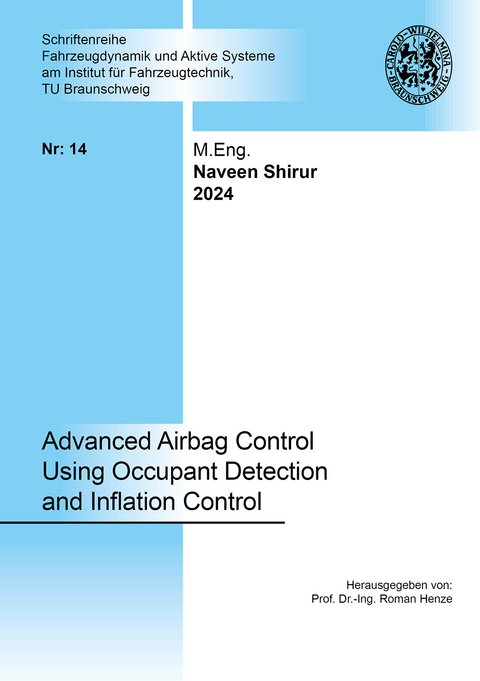Advanced Airbag Control Using Occupant Detection and Inflation Control
Seiten
An automotive airbag is a supplementary passive safety system that restrains the occupants if a crash is unavoidable. It reduces occupant’s deceleration by providing a soft cushion effect. The front driver and passenger airbags are designed considering 50th percentile male anthropometry for standard seating positions. However, the real-life collisions differ from standards (e.g., Euro NCAP). A discrepancy exists in safety for diverse percentile class occupants for varying crash scenarios and seating positions since airbags’ restraint effect cannot be fully controlled ("fire-and-forget") and remains unanswered. Thus, there is a need to research a new approach to controlling airbag pressure and providing optimum protection to occupants irrespective of crash and occupant configurations.
Therefore, in this research, a new adaptive airbag is presented. It consists of two key components: primarily an airbag control valve (ACV) and a novel supplementary textile contact sensor to detect occupant contact with the bag. The ACV controls the bag inflation pressure based on the occupant’s contact information with the bag provided by the sensor. In addition, a novel control strategy is presented to adapt the bag pressure and optimize the restraint effect to mitigate the injuries.
The adaptive airbag’s assessment under drop tower impacts revealed the benefit of active contact-based pressure control in reducing deceleration peak and pulse duration. Finite element sled simulations demonstrated head injury mitigation with pressure control, while neck and chest injuries require bag shape optimization and adaptive seat belt, respectively.
Therefore, in this research, a new adaptive airbag is presented. It consists of two key components: primarily an airbag control valve (ACV) and a novel supplementary textile contact sensor to detect occupant contact with the bag. The ACV controls the bag inflation pressure based on the occupant’s contact information with the bag provided by the sensor. In addition, a novel control strategy is presented to adapt the bag pressure and optimize the restraint effect to mitigate the injuries.
The adaptive airbag’s assessment under drop tower impacts revealed the benefit of active contact-based pressure control in reducing deceleration peak and pulse duration. Finite element sled simulations demonstrated head injury mitigation with pressure control, while neck and chest injuries require bag shape optimization and adaptive seat belt, respectively.
| Erscheinungsdatum | 05.11.2024 |
|---|---|
| Reihe/Serie | Schriftenreihe Fahrzeugdynamik und Aktive Systeme am Institut für Fahrzeugtechnik, TU Braunschweig ; 14 |
| Verlagsort | Düren |
| Sprache | englisch |
| Maße | 148 x 210 mm |
| Gewicht | 225 g |
| Themenwelt | Technik ► Fahrzeugbau / Schiffbau |
| Technik ► Maschinenbau | |
| Schlagworte | adaptive airbag • airbag control • injury assessment • occupant detection • Occupant Safety • passenger airbag • Pressure Control • Vehicle crash |
| ISBN-13 | 9783844096910 / 9783844096910 |
| Zustand | Neuware |
| Informationen gemäß Produktsicherheitsverordnung (GPSR) | |
| Haben Sie eine Frage zum Produkt? |
Mehr entdecken
aus dem Bereich
aus dem Bereich
Grundlagen, Komponenten und Systeme für assistiertes und …
Buch | Hardcover (2024)
Springer Vieweg (Verlag)
CHF 389,95
Biomechanik, Unfallvermeidung, Insassenschutz, Sensorik, Sicherheit …
Buch | Hardcover (2024)
Springer Vieweg (Verlag)
CHF 139,95




